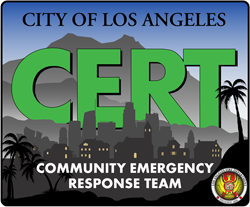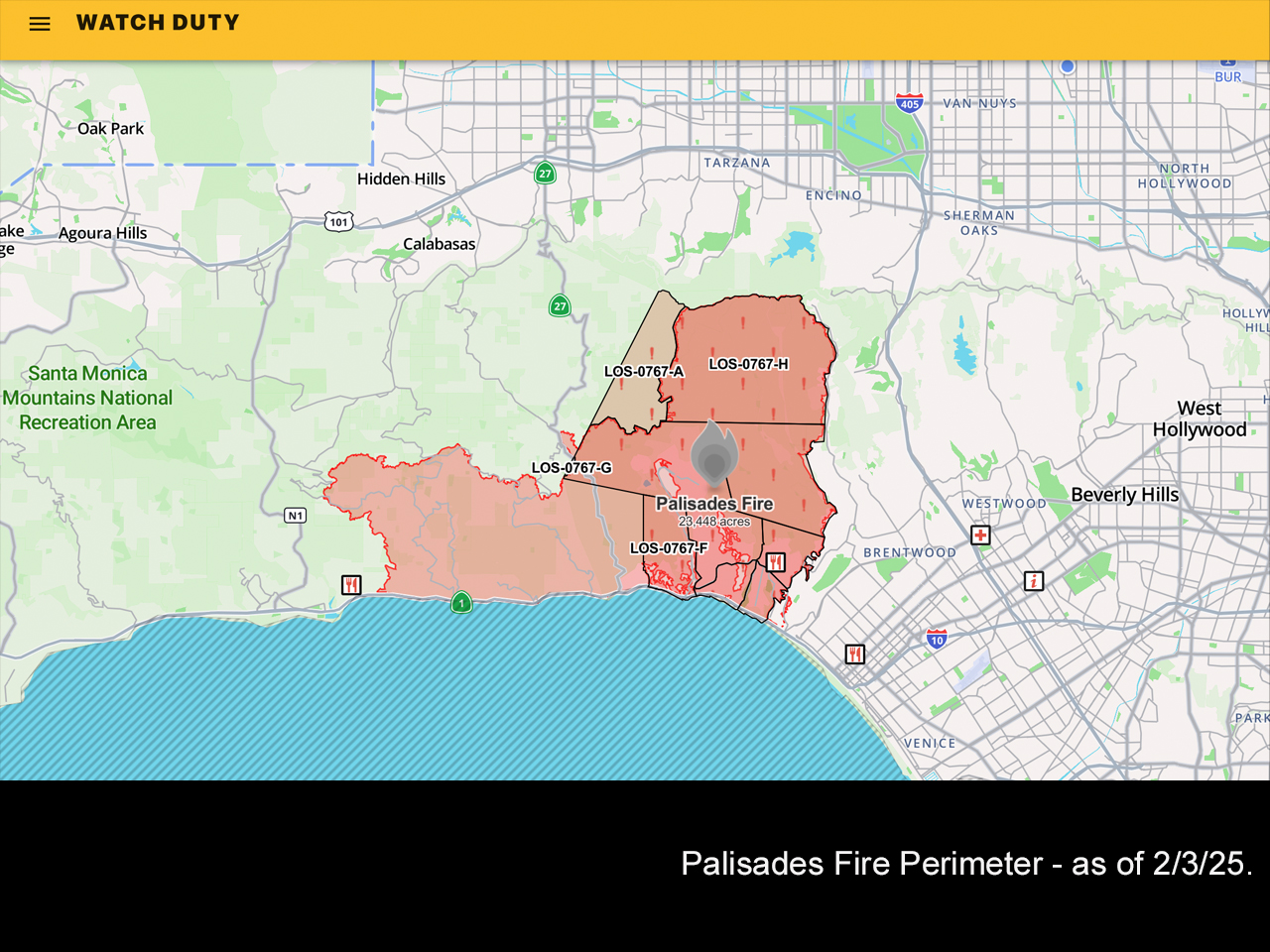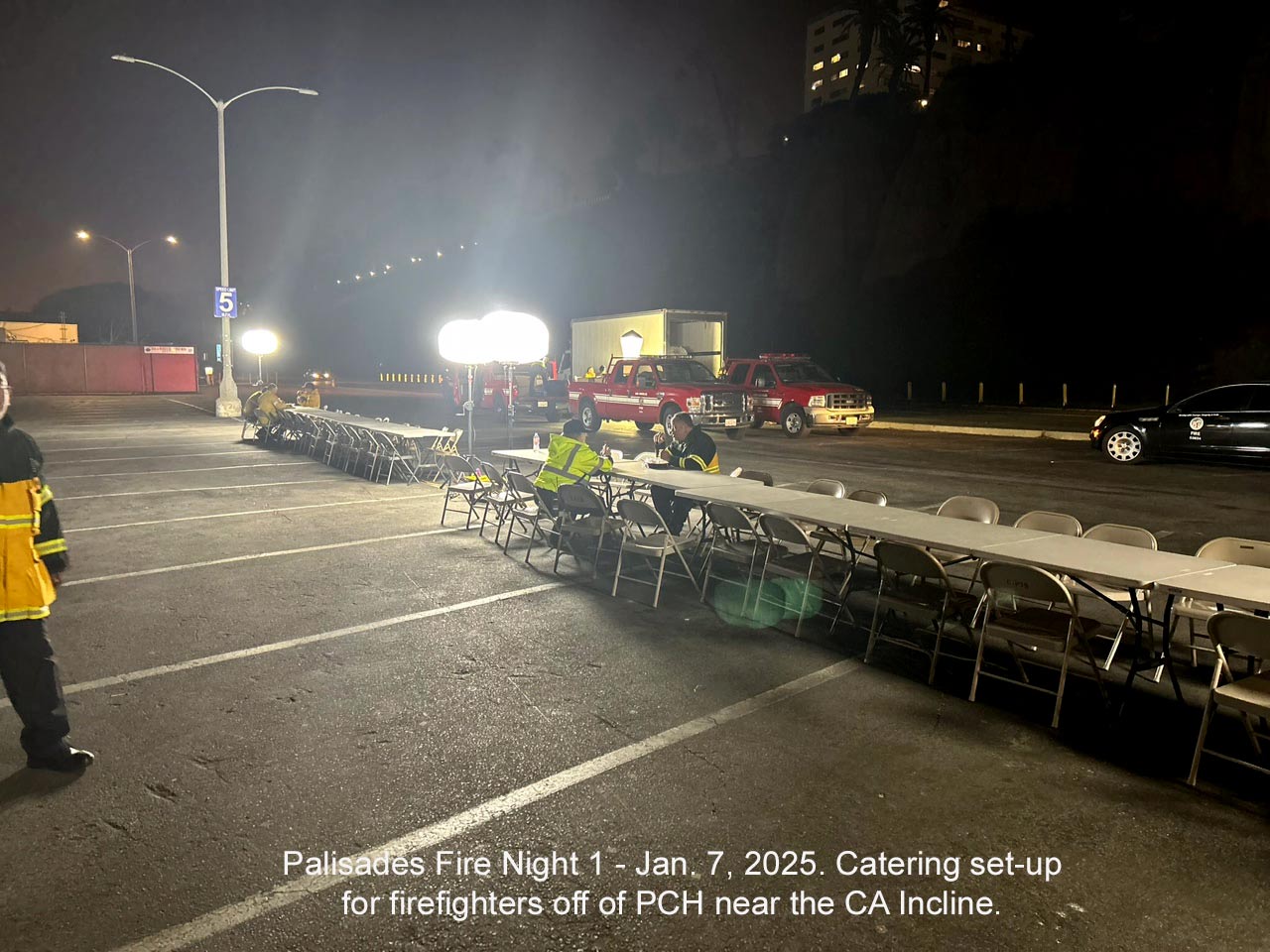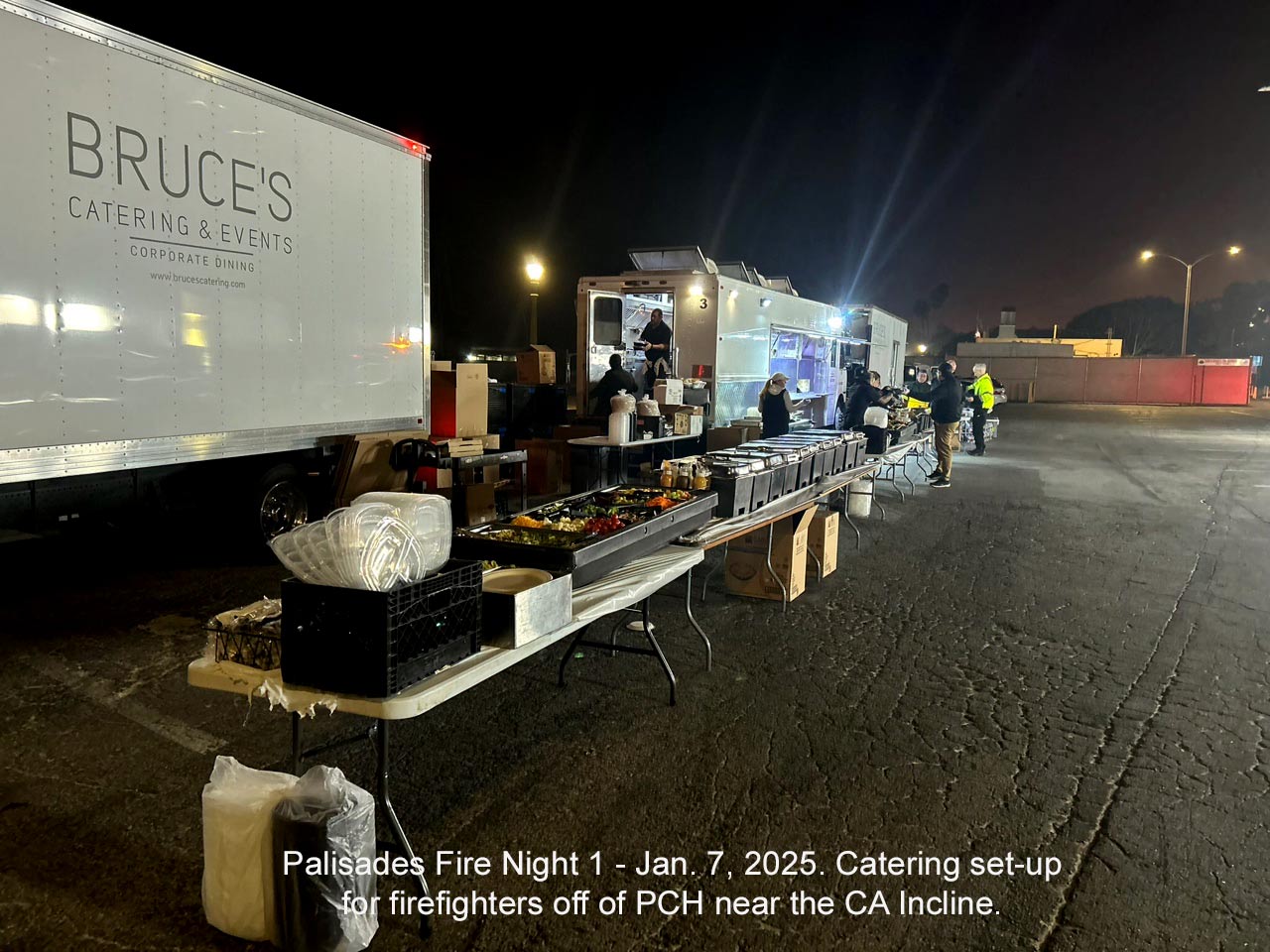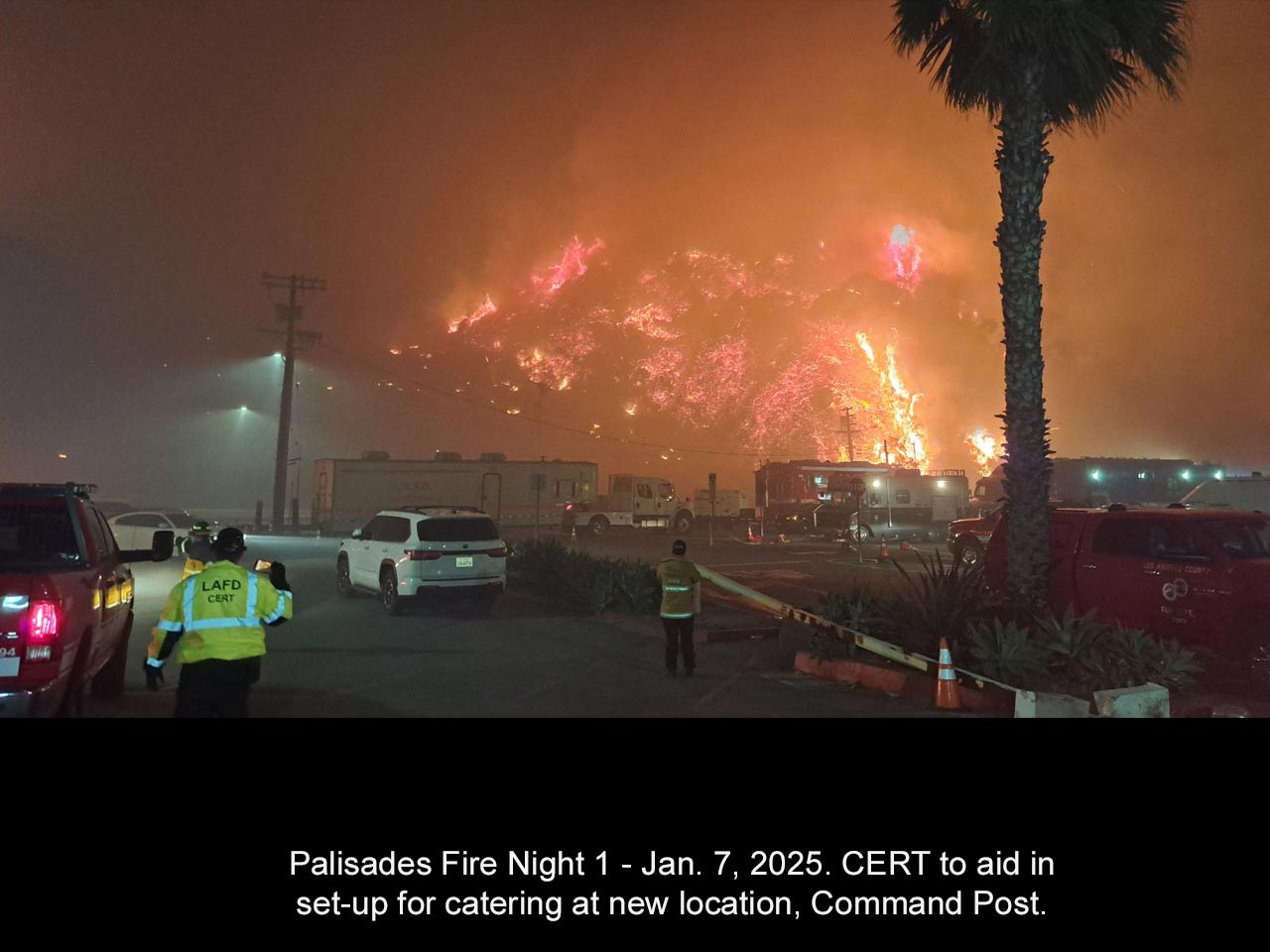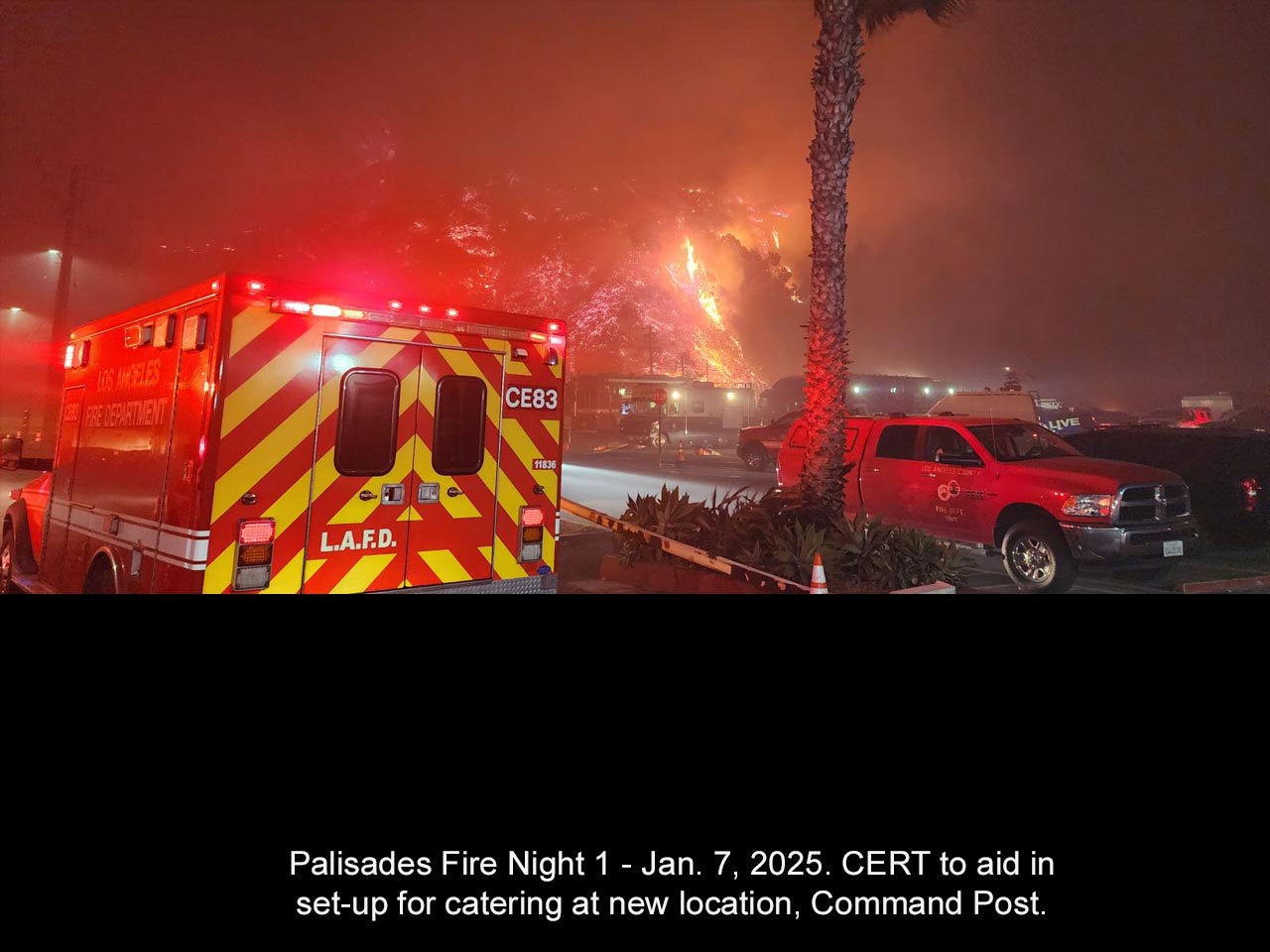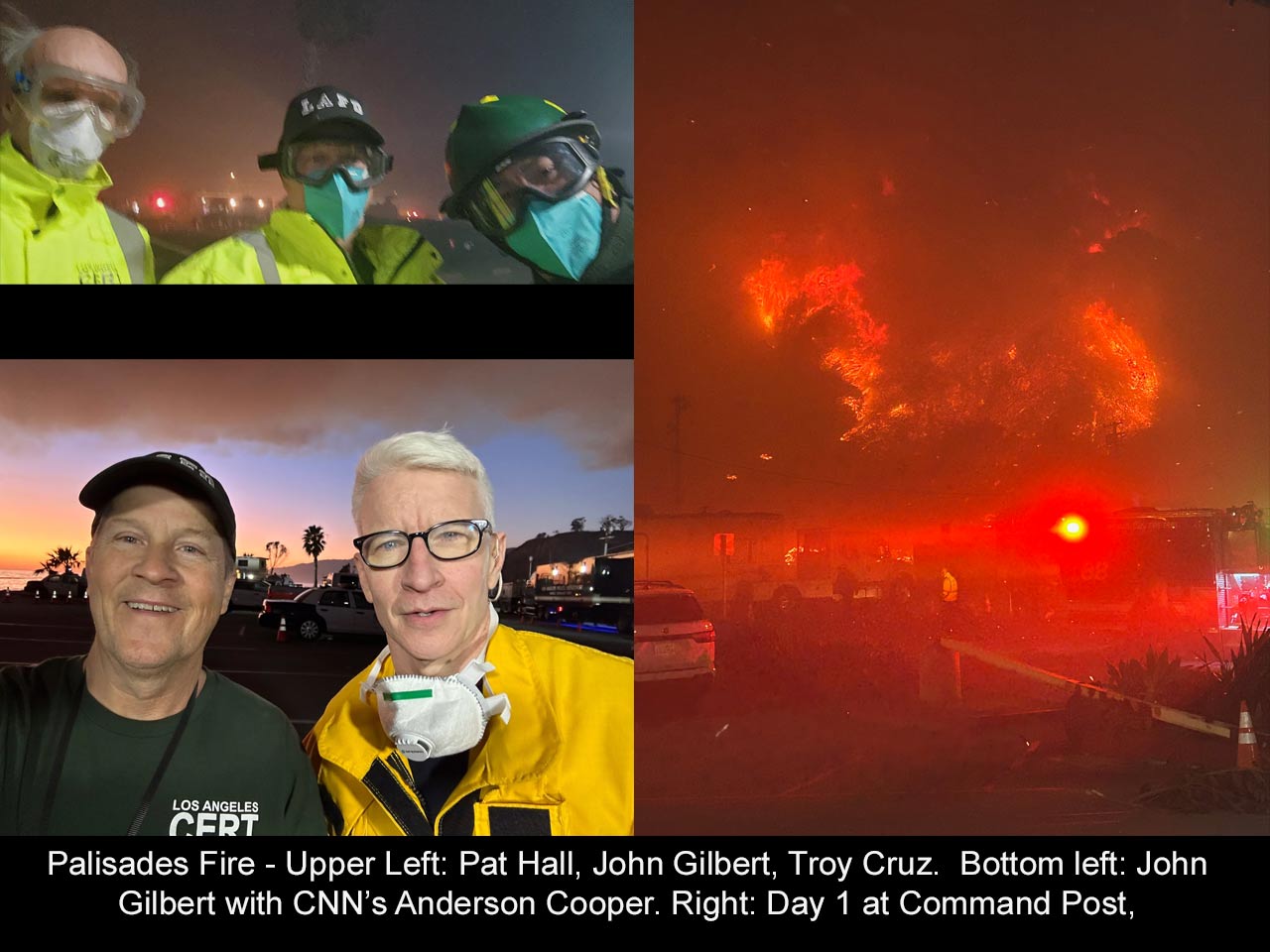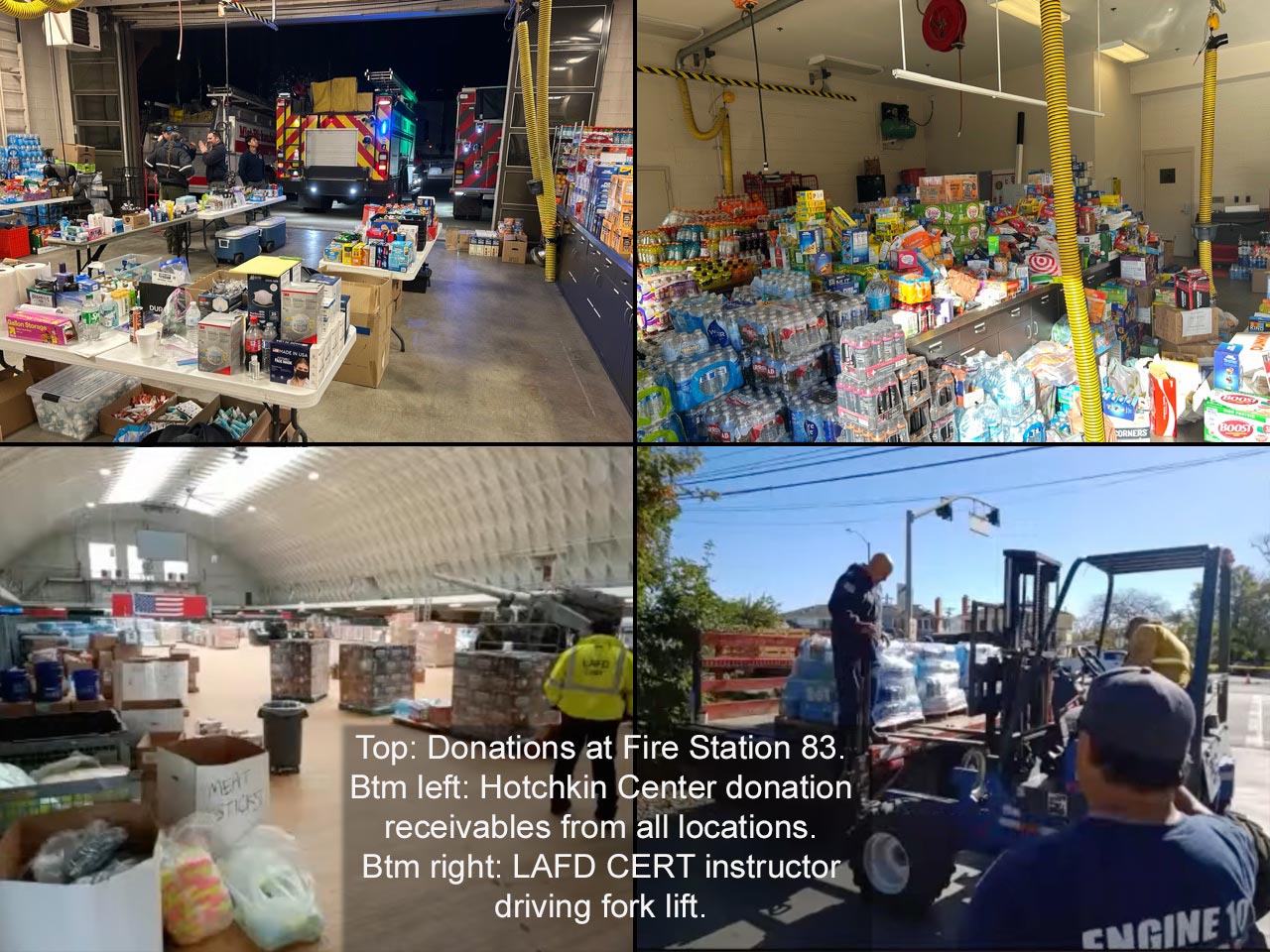There have been questions from the CERT community as to why they were not deployed during the January 2025 Los Angeles fires. (This ONLY applies to the LAFD CERT community, that is Los Angeles City.) As discussed in a video, (Disasters 101 – Earthquakes, Floods, Fires, Winds) presented by LAFD CERT Bureau Coordinators, Patrick Botz-Forbes- and Chin Thammasaengsri, Chin explained the reasoning at about the 2:00 hour mark in the video. Essentially, there are two main reasons that the CERT Call-Out team was only deployed during this disaster and not those that had only taken the basic CERT course. Those reasons are simply…safety and security. The LAFD CERT Call-Out team (here is a list of Prerequisites) have undergone extensive additional training, DVOC classes (Defensive Vehicle Operator Course) in order to drive LAFD decommissioned vehicles) and a mandatory background check. The background check must be done by the LAFD. This team structure has been in place since about 2019 when the Call-Out team was formalized. In a volatile, and oftentimes dangerous situation, people that have gone through extra training are more situationally aware due to their exposure to these hazards. Security also is a priority as CERT has access to fire stations, rigs, and dangerous areas that are not open to the public. They have to understand the chain of command and who they are reporting to. It is also important that in situations with so many moving parts and pieces, that the teams know each other, have worked with each other before, and know that their fellow team members have their back and have had the training to execute their job safely and completely.
Before the fires struck, the LAFD CERT Call-Out teams were deployed for fire patrol, starting Jan. 6th throughout the entire Red-Flag areas and were to continue during that period of time that the red flag notice was in effect. As Chin points out in the video cited above, the patrols were “short lived” as the teams were deployed to help in functional tasks for the fire fighters once the fire began. (see next post on CERT Wildfire Monitoring.)
In the photos in this post, you will notice LAFD fire rigs with the notation CE which stands for…CERT. After that is a number which denotes the fire station where the equipment is based, such as CE83. There are several types of vehicles that CERT Call-Out members can drive, such as the decommissioned EMT rigs, SVU’s, etc. Call-out members do daily monitoring of their equipment so they are ready to go when they are dispatched.
Tasks for which the LAFD CERT Call-out team were assigned at the start of and during the Palisades, Hurst, and Sunset Fires are listed below. The Eaton (Altadena) and Hughes fires were outside of the LAFD CERT (Los Angeles City) perimeter. They did, however, bring needed supplies to the Eaton fire to community charities.
- Fire Support Operations at Incident Command (IC), taking care of fire crews
- Meal Service – at IC or trucked up to the fire fighters on the line.
- Supply needed equipment
- Clean up of Incident Command areas.
- Inventory – Packing – Shipping of Donations made at fire stations. Though the public wants so desperately to help during these times, their largess becomes a huge problem for LAFD. The fire stations are overwhelmed with donations which prevent the very use of those stations (see photo of donations where rigs on parked outside their station.) The donations must be then packed and taken to another location (in this case the Frank Hotchkin Memorial Training Center.) Though some donations were indeed brought up to the fire fighters in the field, most donations are still (as of 2/2/25) at the Hotchkin location.
- Repopulation Effort: to escort residents to see and/or salvage items from their homes.
- Service LAFD and other community units – bringing food and needed items to community groups working in the burned areas as they assist former residents in the recovery stage of the tragedy.
- Patrolling areas to assist residents and report possible looting.
- Main intake area – handed out Repopulation Packs (these packs consist of protective bunny suits, gloves and masks to resident whose homes/businesses were damaged or lost), handed out information sheets, and offered sympathy, empathy, and understanding.
Firsthand reports are the best in capturing what really went on during the frantic days of the fires. One of the most active members of the CERT Call-Out Team is John Gilbert (most of the videos on this website are his work in taping & editing.) The following are his reports of his experience as a CERT Call-Out member.
Meal Distribution for Firefighters
There were some firefighters who were picking up some tables and chairs that we had just set up for the catering. I offered assistance to load the chairs and tables. Troy Cruz and Pat Hall assisted. While doing that, I had asked the firefighters if they needed help setting up the meals wherever they were going and they said yes. I was told to follow them, and I let them know what rig we were in. I made notifications as to where my team was heading and we were off. I thought we were just heading up PCH a bit to set up meals and to our surprise, we ended up all the way up at the command post. The second we pulled in the Captain in charge, Captain Kitihara, said he had been looking for us (The CERT team) and needed help. We said we would do whatever he needed and we were requested to set up the meal service and unload some 400 hot meals and set up in a hardened lifeguard station. (It later caught on fire and E88 had to come put it out.) For the next 3 and a half hours or so, we worked to get these meals out to engine companies working the incident. During that time, the hill across from the command post caught on fire, lighting a wall of flames approximately 200 feet high (see photos above). I heard there was a shelter in place order for all personnel at the command post but I couldn’t verify that, but we were not even attempting to go anywhere. There’s a shot of our CE83 rig that was backed in next to PCH with fire all around it so I had to move it. That provided some good photos of CE83 being moved with the wall of flames in the background. I was driving the rig. Note the embers that were racing past us all night long. It was pure chaos. We didn’t leave until well after midnight.
I had the next two days off but worked Friday with Jeff Hole and Troy Cruz for Captain Moody and Captain Kitihara delivering meals around the area and also making a food delivery to the Sunset Fire in Hollywood. Eventually making it back to the Palisades command post and got to meet Anderson Cooper who was doing a live broadcast on CNN from the command post.
Donation & Repopulation Phases
Into about day 5 of the Palisades Fire, we shifted to the donation phase of our operations. I worked at Station 83 for about 7 days in a row handling all the donations flooding in from generous Angelenos. We had many out-of-state strike teams stationed out of station 83 in Encino so we had set up a CVS style market for firefighters to walk through and take whatever that needed from snacks to shaving items to toothbrushes and toothpaste to soap and shampoo. We also supplied the Altadena area shelters and churches with car loads of supplies on a daily basis. Snacks, water feminine products diapers, toothpaste kits, baby wipes, you name it and we had it. We also had hundreds of meals a day coming in for the firefighters and the visiting strike teams, so we would organize receiving those. This work we did for so many days in a row, freed up the station staff to continue emergency operation calls in the Encino area throughout the emergency period. “Big O” Orlando Bohr was the most help during this emergency working almost every day in all operations and maintaining a great attitude the entire time. After these 7 or 8 days, we moved to the Re-population phase of the operation. By then I was losing my free time and could only do one day of Re-pop (day 2) and of course photos were not allowed. I worked Zone 4 where the fire began & where there were many destroyed homes. Our mission was to set up a distribution point for handing out the PPE kits for returning residents. We handed out probably a hundred kits throughout the day.

